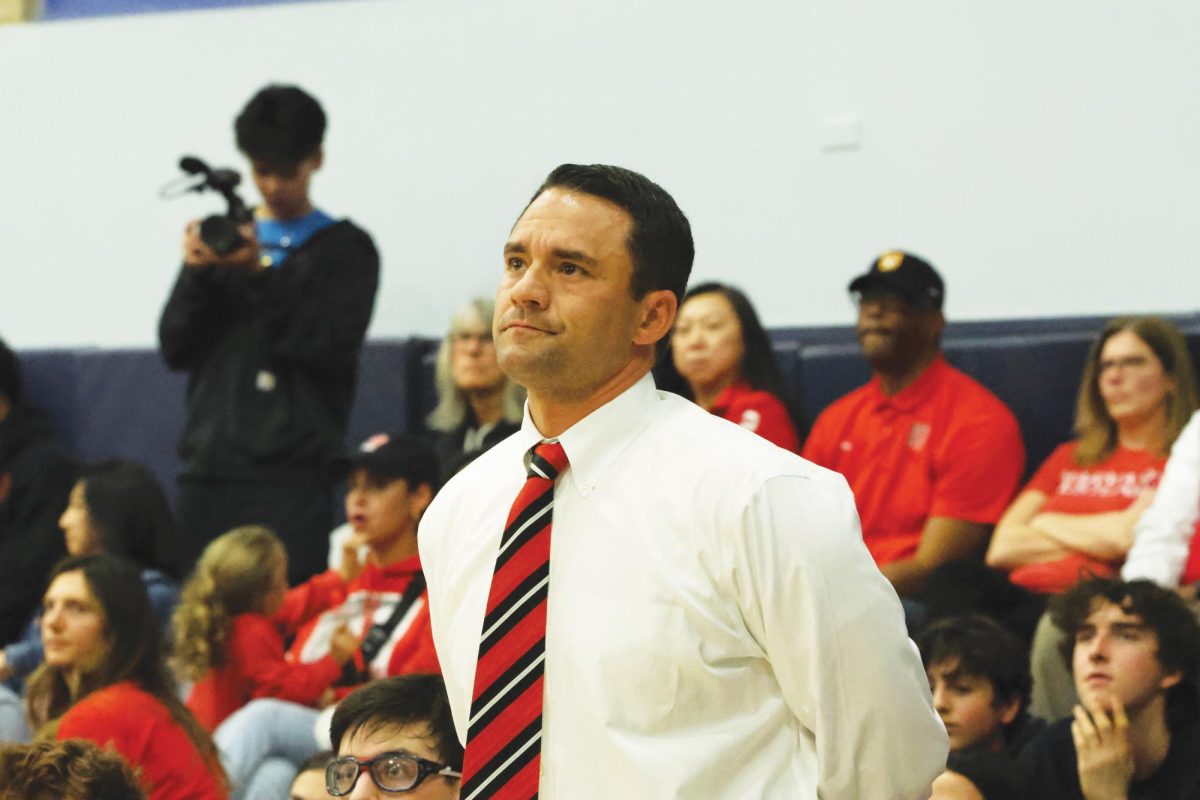Throughout the fall, winterand spring months, most student athletes rotate in and out of their conditioning and competitive seasons. However, fencing team captain Coco Kaleel ’20 participates in a year long competitive season.
In the summer of 2013, Kaleel took part in a Harvard-Westlake’s Summer Fencing Program, where she bonded with both summer coach and former head coach Ted Katzoff.
With seven years worth of competitive fencing experience under her belt, Kaleel holds the same passion for fencing as she did when she first decided to become a student athlete and compete in club fencing.
Throughout her fencing career Kaleel has experimented in two out of the three different fencing divisions. There are three different fencing divisions based off of the on the weapon blade used. The most basic of the swords, epee, has a hand guard, and touches could be scored on any part of the body. Like in the epee division, in the foil division, touches are only scored by contact from the tip of the blade. The foil blade has a flat guard and fencers wear a lamé, which is a mesh shirt that covers the player’s torso. The sabre blade fencers also wear lamé, but it covers the player’s entire upper body. Kaleel began her career as a foil fencer, but in recent years switched to the sabre fencing division.
The technique of a sabre fighter differs from the other divisions, but for Kaleel, a primary factor in switching divisions was the change in competition style.
“The way you’re hitting is completely different,” Kaleel said. “In my opinion, it’s more fun, just because everything feels more fast paced and immediate. And at competitions, there seems to be just a stronger connection among the fighters.”
Although Kaleel appreciates the bond she has with the sabre and fencing community as a whole, she also feels that fencers lack both the numbers and support of others to become a widely recognized sport.
“I think a lot of people just don’t realize that fencing is a real sport,” Kaleel said. “To be honest, I wouldn’t be shocked if most kids at Harvard-Westlake either don’t know we have a fencing team, or just that it’s fairly overlooked among the fanatics.”
The lack of recognition that fencing receives is due in part to the fact that the sport of fencing has been popularized on the East Coast, as the National Fencing Club Rankings state that about 50 percent of the country’s top teams are located in five states – New York, New Jersey, Massachusetts, Texas and Virginia. Kaleel hopes for fencing to gain popularity within the school’s community, but sees the lack of fencing tournaments throughout the year as an obstacle to this goal. Currently, the squad competes in four or five major tournaments each year, and program head Erika Velarde is looking to increase the rigor of the program and to incorporate more tournaments into the season, with hopes that this would promote the sport within the school’s athletic community.
The team not only aims to compete in more tournaments in its 2020-2021 season, but also implement a more vigorous training and strength program. The squad currently practices three times per week and included a strength and conditioning schedule in its practice program. Although fencing does not require the pure strength needed for sports such as football, for a fencer it is key to have the strength to strike their opponent hard, maintain their balance and block attacks, Kaleel said.
“[Weight lifting] helps in two ways,” Kaleel said. “For one, it’s just about strength, and having that brute force to be able to hit your opponent hard enough. If someone parrys you and you hit them hard enough, they’re going to get hit regardless. It’s also just about stamina, because you know tournaments can last a long time, and if in practice you work on building strength and endurance, that can really pay off when you’re competing at tournaments that potentially last the full day. It helps to keep your energy up, and when you’re trained to retain energy and keep your strength, it also helps tactically, being able to hit your opponent more precisely.”
The team’s effort to build up their strength has paid off as they have had a successful season so far. However, in order to keep their league championship winning streak, they will have to beat Chaminade College Prepatory, a team they have been even with throughout the whole season.
“It’s definitely frustrating because we’ll win one tournament, and then they’ll win the next, and at the moment there isn’t a definite projected winner for the league,” Kaleel said. “But it also really helps to motivate the team. I think that if we were in a position where we had no competition, we wouldn’t have the same desire to keep working hard at what we’re doing.”
Kaleel is using the team’s tie with Chaminade as incentive to work independently on her technique and speed. With more precise technique, Kaleel said she will strengthen her blocking ability. Kaleel said she has also seen improvement in her attacks.
“I think I’ve gotten better at like attacking my opponent, kind of like intimidating them,” Kaleel said. “I’m no longer just immediately attacking on instinct, instead I’m holding it out longer. If someone attacks me and then I parry, I have that initial thought to attack back immediately, but because that’s anticipated, it’s easier to block, so the longer I hold it out, the more my opponent starts to freak out.”
Kaleel said her new tactical approach to fencing has helped her to get to the next level in fencing. Because fencing opponents are matched based on their skill set, developing strategies is what allows one to surpass their competitor.
“It’s like highly depended on what the other person is doing, because everyone has the same basic toolbox of skills,” Kaleel said. “That’s why strategy is so important, everyone knows how to block or strike, so when you attack someone, you have to be able to tell the difference if your opponent is faking with their response, or if it’s actually a committed attack. Based on that, you have to be able to decide what your next move is going to be.”
Kaleel said she and the team have not only put emphasis on their physical and technical abilities, but have also worked to bond together as a unified and supportive squad. Although fencing is an individual sport, Veralde has made an effort to incorporate spirit into each practice and recognize the individual success of each player after tournaments.
“It’s really fun because after each tournament we all kind of gather in a little circle and the coach reads off everyone’s accomplishments and we all give a little clap after,” Kaleel said. “We also have rituals before each tournament. Like our team captain two years ago was also a yoga instructor, so ever since then we do a mini yoga routine before each tournament.”
Heading into the second half of their season, the team is shaping up to win a league title for the third year in a row. As for Kaleel, who will be attending Brown University as class of 2024, she will not continue to compete in fencing for the University’s team. However, it is something she said she would like to continue, as she still holds love for the sport.






































